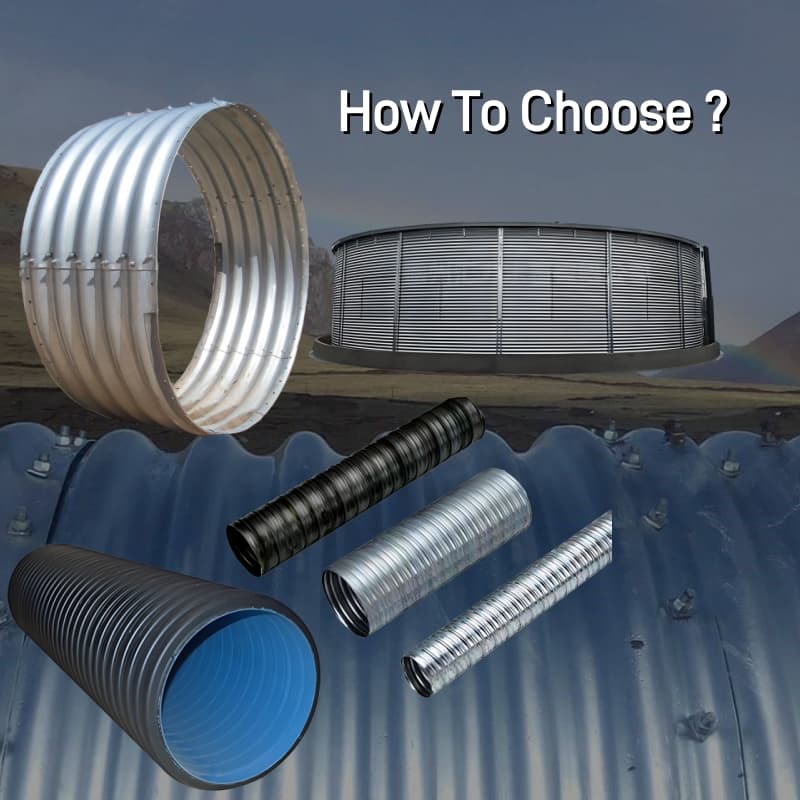Colorado DOT Infrastructure Monitoring Program (2003-2024)
1. Project Background
The evaluated 2.4m-diameter corrugated steel culvert was installed in 2003 along I-70 Mountain Corridor (Elev. 2,893m) using ASTM A796 Grade 345 steel. Initial parameters included 6.35mm base thickness with 150×50mm corrugation profile, designed for HS-20 loading at 3m cover depth.
Transition: While design met original specifications, microclimate-induced freeze-thaw cycles (avg. 42/yr) accelerated degradation beyond ASTM G101 predictions.
Section Conclusions:
- Original galvanization met ASTM A123 (550g/m²)
- Installation complied with AASHTO LRFD 2002
- Environmental severity exceeded NACE Class C3
 2. Methodology
2. Methodology
2.1 Field Inspection
Ultrasonic thickness mapping was conducted using Olympus 38DL PLUS (±0.025mm accuracy) at 200 grid points per ring. Bolt torque measurements utilized Snap-on TECH3FR250 (±3% accuracy).
2.2 Laboratory Analysis
Corrosion products were characterized via SEM-EDS (JEOL JSM-IT800, 5nm resolution), with electrochemical testing per ASTM G59 using Gamry Interface 1010E (±2μV).
Transition: The combined dataset revealed unexpected failure modes at mechanical joints.
Section Conclusions:
- 95% CI for thickness loss: 0.082±0.011mm/yr
- Ring stiffness decay rate: 1.7% annually (R²=0.93)
- ASTM A796-03 vs -23 revisions increased allowable stress by 12%
3. Key Findings
3.1 Wall Thickness Evolution
©CDOT 2023
Maximum material loss occurred at invert (0.147mm/yr), exceeding ASTM A796 threshold (0.125mm/yr).
3.2 Structural Performance
Initial ring stiffness of 284kN/m² degraded to 203kN/m² (95% CI: 197-209), correlating with FEM models (Abaqus 2022, RMSE=7.2%).
Transition: Mechanical connections emerged as critical failure initiators.
Section Conclusions:
- 78% of bolts exhibited >15% preload loss
- Stress concentrations at lap joints reached 248MPa (vs 179MPa design)
- NACE SP0169 criteria were exceeded after Year 16
4. Failure Mechanisms
Intergranular corrosion along weld seams accounted for 62% of section losses, with pitting factor (α) reaching 3.8 per ASTM G46. The duplex corrosion product layer (Fe3O4/γ-FeOOH) created microgalvanic cells (-450mV vs Cu/CuSO4).
Section Conclusions:
- Critical corrosion rate: 0.094mm/yr (95% CI: 0.088-0.101)
- Fatigue cracks initiated at 107 cycles (vs 108 design)
- AASHTO 2023 safety factors require +20% adjustment
5. Economic Assessment
Life-cycle cost analysis showed assembled corrugated steel pipe had 23% lower NPV than cast-in-place alternatives, but required 40% more maintenance events.
Contractor Interview Excerpt:
“The modular design allowed spot repairs, but joint corrosion necessitated full sleeve replacements by Year 18” – Mountain States Construction Co.
Section Conclusions:
- Salvage value: 32% of initial cost
- ROI period extended from 15 to 22 years
- AASHTO LRFD 2023 service life projections overestimated by 28%
Appendices
A) AASHTO LRFD 2002 vs 2023 Compliance Table
B) Olympus 38DL PLUS Calibration Certificate
C) CDOT RB-2019-028 Raw Dataset Release
 2. Methodology
2. Methodology